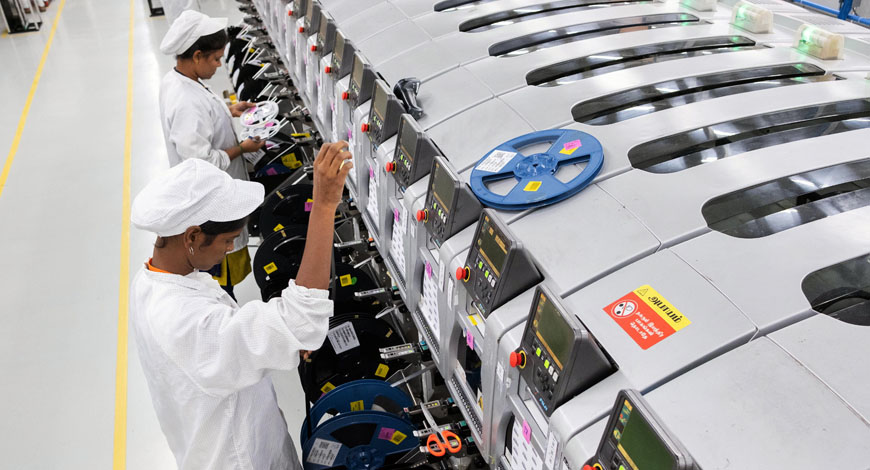Headlines of the Day
Foxconn has merely corrected course, planning two fab plants in India

Having walked out of a joint venture with the Vedanta group to set up a semiconductor plant in Gujarat, Taiwanese major Foxconn is learnt to be looking at chip manufacturing in the country separately. According to a source in the know, Foxconn is planning to apply to the government to set up two fab plants on its own.
One of the facilities that the Taiwanese firm is planning will be a compound semiconductor plant based on gallium nitride to make chips used widely in power electronics, electric vehicles (two-wheelers) and telecom devices. The other fab will be based on silicon, one of the people engaged in the talks said.
It is learnt that Foxconn is looking to make a range of chips—14, 28, and 40 nanometre. While the details have not been finalised, Foxconn could also bring in a Taiwanese fab company as a technology or JV partner.
Meanwhile, in an unusual step, Foxconn issued a statement on Tuesday, attempting to clarify why it walked out of the Vedanta JV and its next move. Foxconn’s statement, which hinted at the hurdles without getting into details, said: “Both parties mutually agreed to part ways. This is not a negative.
There was recognition from both sides that the project was not moving fast enough, there were challenging gaps we were not able to smoothly overcome, as well as external issues unrelated to the project.”
On Monday, Foxconn withdrew from its JV with Vedanta to set up a $19.5-billion fab plant to manufacture 28 nm and 40 nm chips at Dholera, Gujarat, in a blow to the government’s semiconductor ambitions in an evolving geopolitical background.
‘’When Foxconn course corrects, it is done only after heavy considerations on the near-term impact to our stakeholders, and on the long-term corporate health to the group and our shareholders,” the Taiwanese firm said a day after announcing its exit from the JV. It added that building fabs from scratch in a new geography is a challenge, while pointing out that Foxconn is committed to invest in India. “Foxconn has no intention to do anything but continue to strongly support the government’s ‘Make In India’ ambitions and establish a diversity of local partnerships that meet the needs of stakeholders,” it said.
In the new scheme of things, Foxconn is also looking at buying back the chips that it makes in India, it is learnt. Globally, the company is estimated to buy over $40 billion worth of chips annually for its electronics manufacturing (EMS) requirements. The demand for chips will only go up as Foxconn plans a major foray into the electric vehicle universe. Among the countries it wants to set up a plant for EVs is India.
Fabs built on gallium require much lower investment ranging anything from $80-100 million to up to $500 million depending on specifications of the plant and can be commercially built much faster. Some Indian companies are also looking at getting into this area with a very wide market.
In its statement, Foxconn Hon Hai Technology group confirmed the move to set up a fab plant. “Foxconn is working toward submitting an application related to the modified program for semiconductors and display fab ecosystem”.
The company said it’s already reviewing the landscape for optimal partners. Welcoming a diverse set of stakeholders, both in India and abroad, the company indicated that its potential partners should want to see India get to the next level and that they must complement Foxconn’s world-class supply chain management and manufacturing efficiency.
The Taiwanese giant will bring in a proposal for being eligible through the government semiconductor scheme, which offers an incentive of 50 per cent on the project cost. The scheme has been recently opened up for newer players and the deadline has been extended to December next year.
Earlier only three players had applied to set up a fab plant–Vedanta- Foxconn, Singapore based IGSS and ISMC which had a tie-up with Tower Corporation for technology. Business Standard















You must be logged in to post a comment Login